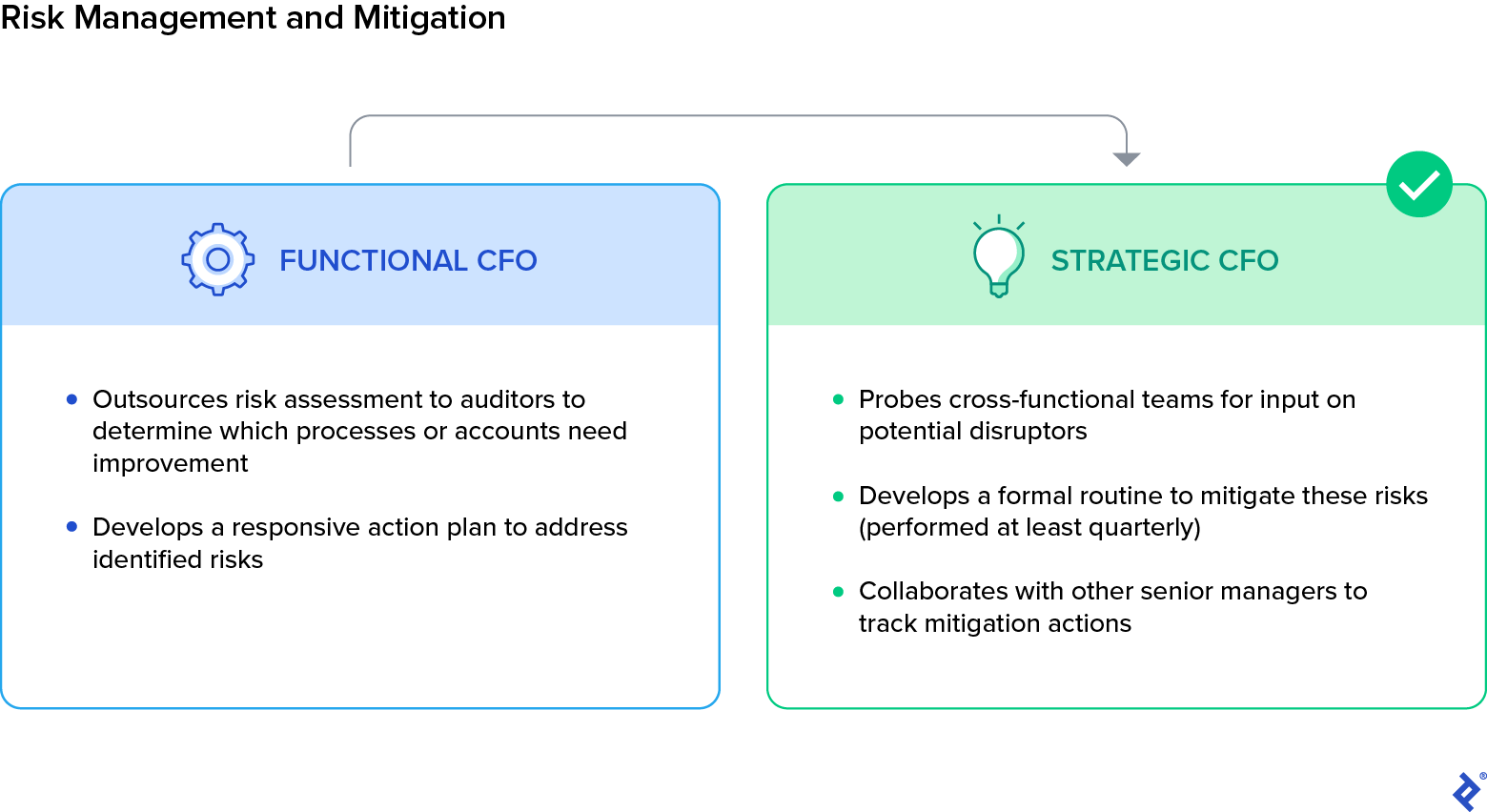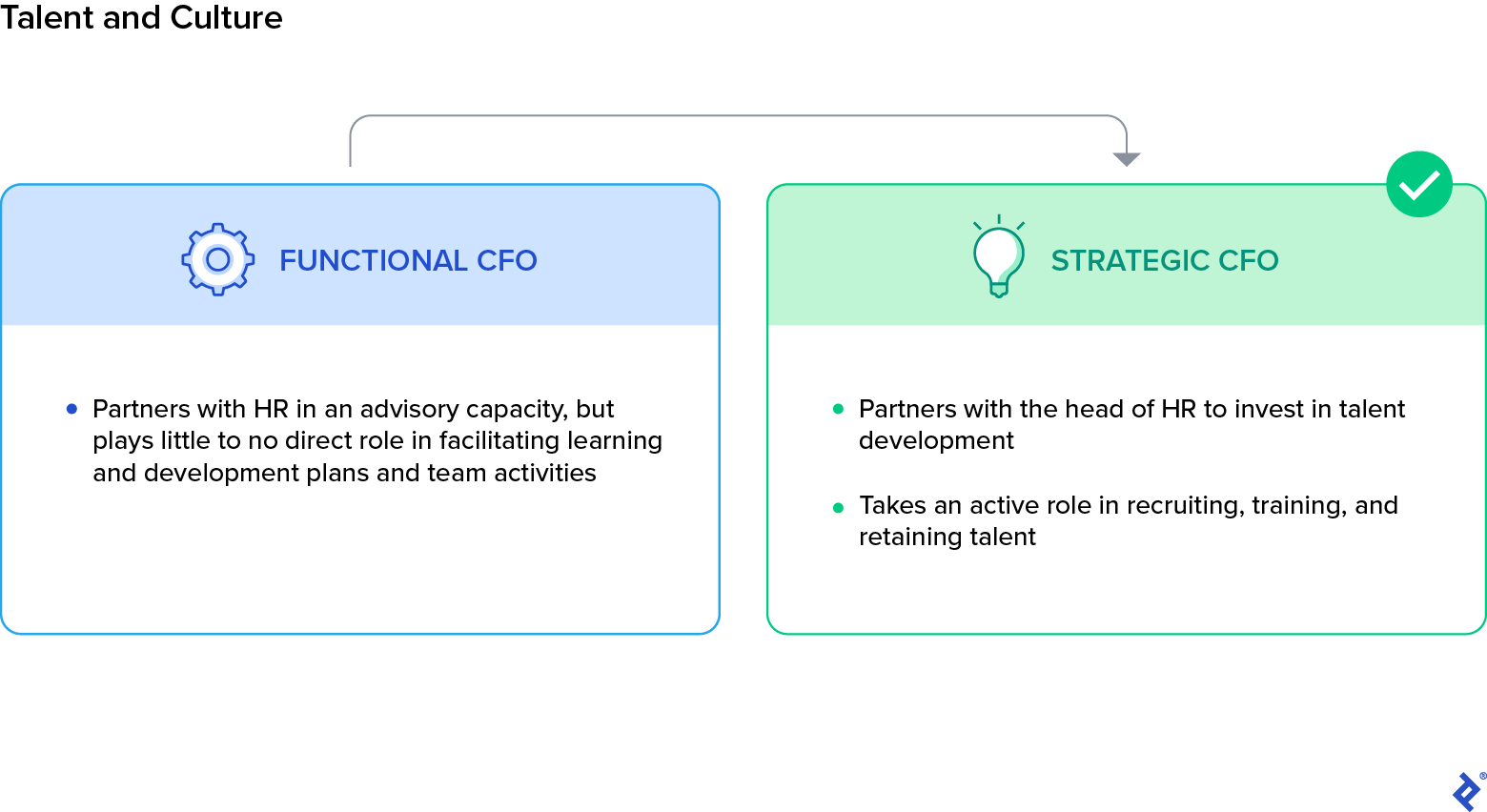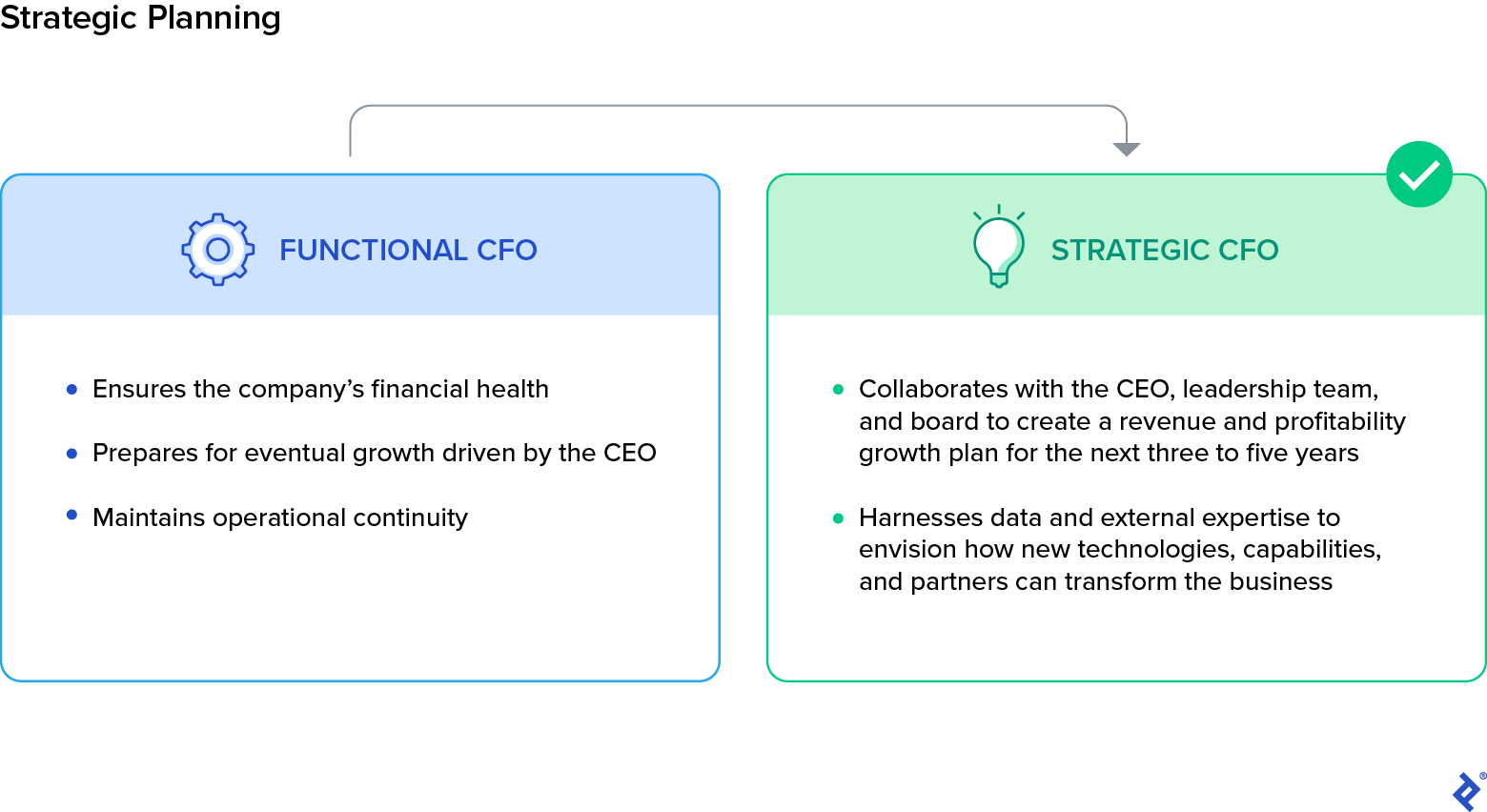The book provides explanation, context and, where applicable, analytic framework for the essential skills found in Chapter Three. Many will be familiar with this type of soft skill—a mix of personal characteristics and learned behaviors. But they can be hard to master, and mastering the wrong skill can come at the expense of developing the right one. Consequently, there is much room for misstep in developing the softer skill set. The book lays out the dos and don’ts for each skill and provides a roadmap for progress and assessment.
Success in the mid-twenty-first century work setting will certainly require solid knowledge of finance, accounting and management—all evidence-based fields ripe with established hard skills. In these areas, one cannot escape from how things have been done for decades. But personal experience of many CFOs and recent academic research each suggest that it is the set of softer, adaptive skills that are more critical in the new environment. With the rate of disruptive changes in technology, business models and regulations, the very nature of how finance work gets done will keep evolving. And the finance function itself will be constantly aligned and re-aligned to best support the business. Under these circumstances, there is significant obsolescence risk for skill sets just a decade old.
The role of the CFO is rapidly evolving beyond the traditional, numbers-focused executor of the company’s financial plan. Although CFOs must possess a solid understanding of finance and accounting, today’s dynamic, digital environment demands that they provide innovative, strategic leadership to drive performance and growth, even to the point of assuming the CEO’s duties in his absence. Essentially, they are being asked to help shape and execute the company’s business strategy. This means providing keen insight on the financial implications of operational and strategic decisions, and ensuring that goals and tactics are aligned with the company’s financial and operational aspirations. At the same time, many are being asked to transform the finance function itself: to create efficiencies and cost savings, to support growth and expansion, and to enhance its analytic capabilities. This book is about the skill set needed to succeed in this new environment. It is intended for current and prospective CFOs and for other senior executives who are financial leaders for their companies.
- Financial Reporting and Forecasting Financial reporting and forecasting are foundational skills for any CFO. The widespread adoption of Software as a Service (SaaS) and cloud-based solutions has simplified and lowered the cost of deploying robust accounting systems throughout an organization. A proficient CFO ensures comprehensive onboarding and usage of these systems by all relevant stakeholders. Moreover, a strategic CFO goes beyond basic usage, leveraging these systems to uncover valuable insights that drive actionable decisions across the organization
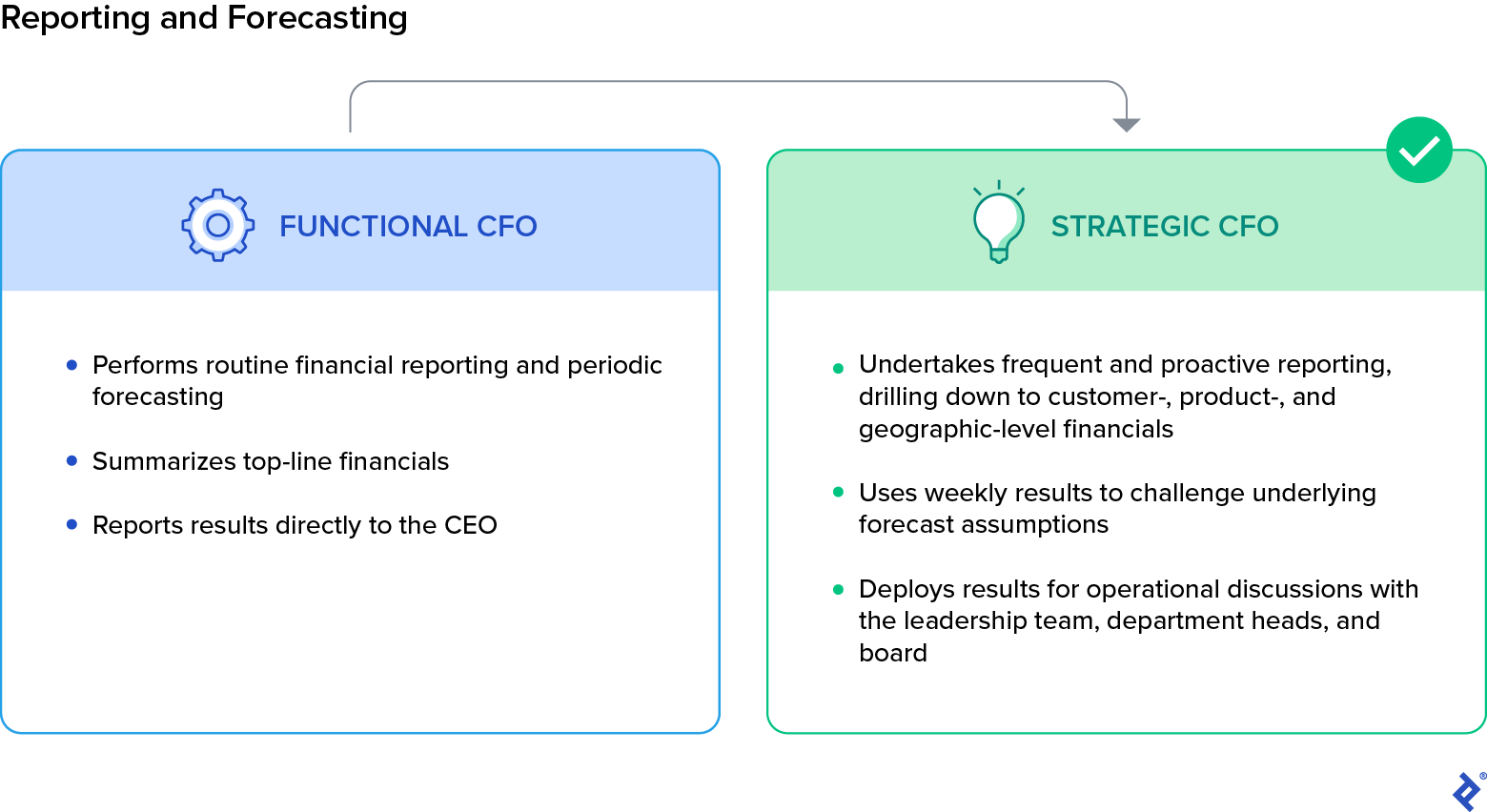
To illustrate the importance of fully onboarding a team, I can share a concrete example from my experience at an early-stage healthcare services company. When I joined this company, the CEO was managing corporate financials using an Excel worksheet saved on his desktop, updating it during evenings and weekends. This approach led to several challenges. Firstly, the financial records were often incomplete and not reflective of real-time data. Secondly, it created a disconnect within the finance team, hindering their ability to provide timely and useful insights for the CEO’s decision-making on sales and profitability.
To address this, I spearheaded the standardization of accounting, operational, and financial reporting templates, along with the chart of accounts. We implemented a reporting calendar, ensuring that the finance team delivered updated income statements, balance sheets, cash flow statements, and customer- and product-level segmentation reports to the CEO and board on schedule. These reports included comparisons with budget, forecast, and prior-year figures for each department, offering comprehensive insights into performance.
Beyond standardizing reporting, we utilized this data to recommend operational improvements to enhance financial performance. This streamlined the CEO’s workload, provided strategic operational insights, and alleviated stress among the management team compared to the previous fragmented reporting system.
- Strategic Financial Planning and Analysis Transitioning from standardized reporting, a strategic CFO emphasizes leveraging databases and quantitative skills for financial planning and analysis (FP&A). FP&A involves data-driven analyses to address financial and operational performance queries across all aspects of the company. While routine analyses compare current and prior period performance, ad hoc analyses might evaluate ROI for new sales technology.
In a strategic CFO role, the focus extends beyond routine FP&A to proactively address critical questions. This approach harnesses standardized processes to optimize decision-making and drive continuous improvement across the organization.
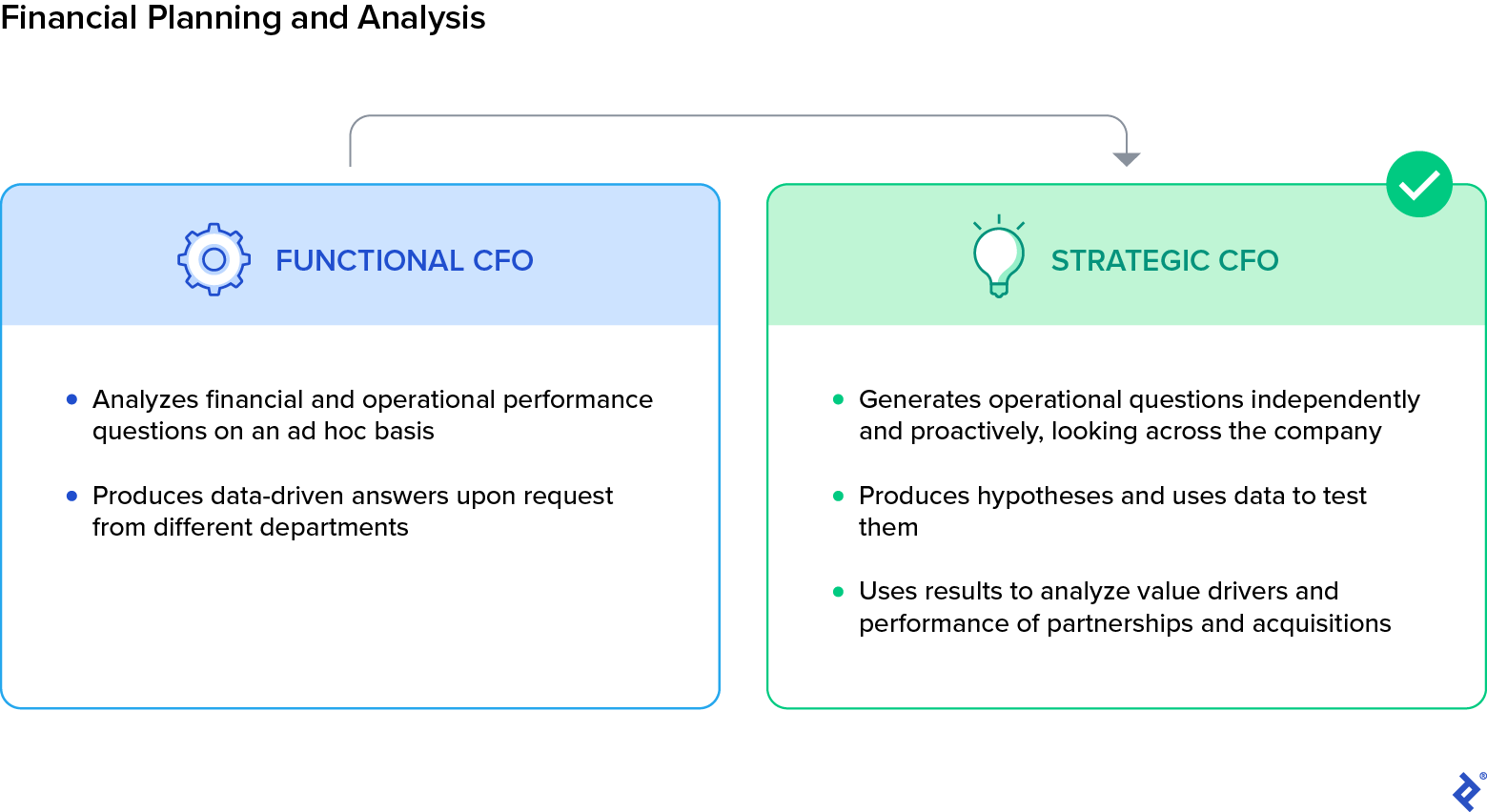
When I joined a pharmaceutical manufacturer as CFO, I found that few of the company’s senior leaders knew which customer, product, or geography generated the highest growth or revenue. This became a problem when the company had to quickly increase profitability. After implementing basic reporting improvements, I conducted a comprehensive profitability analysis of the company’s multiple business and customer segments to begin to answer broader strategic questions.
Using FP&A business intelligence tools like Microsoft Power BI, we pinpointed the sources of the highest growth and the greatest profits and losses. We then broke them down by product category, product SKU, customer, business unit, and geography. But we didn’t just produce a report that sat in colleagues’ inboxes. We looped in cross-functional teams to help us design, develop, and glean insights from the reports, and hosted in-depth conversations with executive leaders of each functional area about commercial and operational changes that would maximize financial performance.
Within a short time, the company had a holistic understanding of which segments contributed profits. Just as important, we had complete alignment among senior leaders that we should focus on the most profitable segments. This strategy allowed us to nearly double the company’s profitability in less than a year.
3. Risk Management and Mitigation
If finance leaders thought risk management was just an administrative footnote to financial oversight, then the COVID-19 pandemic and breakdowns in global supply chains upended that misconception. Today, CFOs must take a role in pushing teams across the organization to make risk assessments and regularly address questions of mitigation. At the same time, they need to see risk management through the prism of opportunity, looking for where it creates potential commercial openings.
